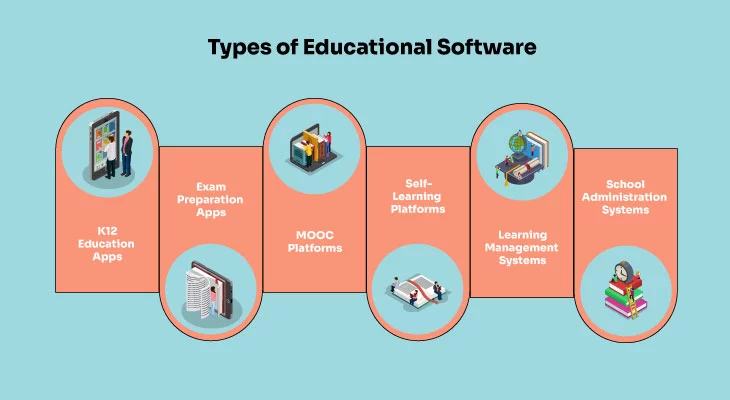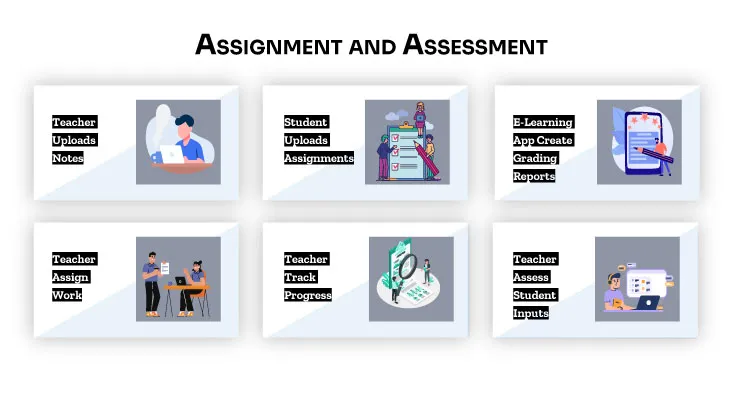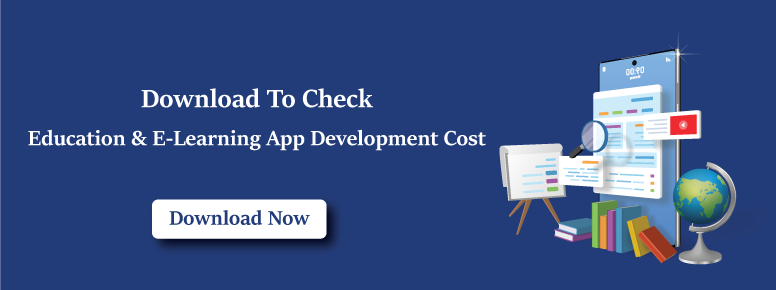The pandemic made us realize that education isn’t limited to the physical boundaries of study halls, it should be available everywhere. With the growing internet penetration and massive demand for remote education, EdTech solutions have become popular. However for some people, the advantages of educational software are still murky. Hence, to answer the question of ‘what is the purpose of educational software’ I’ve formed this article. The article will cover everything that you need to know about EdTech software solutions as well as answer the question what is the purpsose of educational software in detail.
A recent market brief by EdWeek stated that by the end of 2021, 15% of the schools in the USA will have a set of VR classroom kits. Another report by London & Partners and Dealroom found that London holds the top position for EdTech investment in Europe with $630 million investment in London-based EdTech startups.
Advantages of Educational Software
There are a range of benefits of educational software. And in this section of the blog, we shall be going through exactly that. These are, as mentioned below:
Democratization of Education
Despite the splendid global industrial growth and improved living standards, education still remains an inaccessible right for millions of children and adults across the world. With more than 72 million primary education aged children not having access to schools, and 759 million adults being illiterate, the need for education democratization is evident.
Education software solutions make education accessible to everyone with online access, irrespective of their geographic locations or distance from schools. When the technology is advanced to a level where we can build solutions that are more effective than classroom education, the democratization of education will be a nearby reality.
Enable Innovation
Whilst every industry vertical is making use of technology to find new opportunities to bring efficiency and effectiveness, the education sector cannot lag behind. However, the technology adoption in the education sector isn’t new, it’s been more than a decade since educational institutions have been using technology to make management and student learning effective.
Enable Self-Learning
Self-learning requires quality education material accessibility and motivation. With the help of advanced technologies like artificial intelligence, machine learning, and augmented and virtual reality, education technology apps can make self-learning very effective.
Apps like Duolingo are making self-learning a reality. More than 300 million are learning 38 different languages via the app. Other apps like Coursera are also helping people learn by themselves. These apps bring education material online and offer it in a structured manner.
Bridges Communication Gap
Communication among tutors, learners, and mentors is required to facilitate collaboration in learning. Especially in school education, It is essential for mentors to be aware of their children’s progress and performance. To realize this benefit, some education apps provide a separate app for the mentors while others alert mentors via text or emails.
Consolidate Data
Educational institutions can make use of the student data collected via learning management systems or apps. This data can be used to improve the curriculum and personalize the learning for students.
This is one of the great uses of educational software that makes it that much more important.
Enhance Education Effectiveness
When one tutor has to attend to hundreds of students, it is impossible for him to pay proper attention to all of them. It is the most significant drawback with conventional classroom education. On the other hand, online education apps are making learning more personalized. These apps are powered by AI and ML technology that understands the student’s learning pattern and modifies the educational curriculum accordingly.
Types of Educational Software
To answer the question, what is the purpose of educational software, you have to understand the differnt types.
Based on the uses of educational software, there are several types of educational softwares. Here I’m listing the most popular ones

1. K12 Education Apps
K12 education apps provide students (mostly from primary to higher school) with high-quality videos that are specifically designed for academic curriculum. PlanetSpark, BYJUs, and Blackboard Radio are among the top educational software for students. These K12 educational apps come loaded with all the functionalities required to bring classroom education on mobile devices.
2. Exam Preparation Apps
The exam preparation apps empower students to prepare for tests like Mensa, LNAT, IELTS, DET, etc. These mobile apps allow the students to stay in tune with relevant news, access exclusive study material, give mock tests, track progress, and compete with other students. In other words, the main objective of educational software we are discusses here is to prepare students for exam. These apps allow students to prepare for the exams at their own comfort and pace.Some of the top exam preparation apps are Classplus, NeoStencil, Top Rankers, and Examify.
3. MOOC Platforms
MOOC, aka Massive Open Online Courses are educational platforms that offer online distance learning courses backed by universities across the globe. The biggest advantage of these learning platforms is that the students can enroll for any courses within the app. Moreover, these platforms give students an international exposure, by allowing them to connect with other students that are learning the same course.
4. Self-Learning Platforms
These educational platforms are more inclined towards skills enhancement. Platforms like Tabs and Duolingo, allow individuals to learn new skills on their own. These apps are often powered by advanced technologies to guide students through their learning curve. These apps identify the strengths and weaknesses of the students, and personalize the study program accordingly.
5. Learning Management Systems
Often called LMS, learning management softwares are EdTech solutions that facilitate several aspects of the learning process including storing, delivering, and tracking content. Some people often confuse LMS with LCMS (Learning Content Management System). Although LCMS is used to author and manage the learning content, both LMS and LCMS are complementary to each other.
6. School Administration Systems
School administration systems are more like ERP (Enterprise Resource Planning) for schools. These apps are mostly used by school administrators and teachers to schedule activities, create payrolls, manage inventory, and invoices. Some great examples of school management systems are Gibbon, Asana, and Fedena.
Features of Educational Software
Okay, now that you know the benefits of educational software and the types of them, it’s time to understand what features you should incorporate into your educational app.
Here I’m mentioning the crucial features of educational software that will make your app better than the competition.
1. Assignment and Assessment
You need to bring forward the core characteristics of classroom education if you want your EdTech app to be effective. The teachers will require the ability to assign work to their students via the educational software. The educators should be able to upload study materials and reports on your educational software. The students will also require the ability to submit their assignments which can be tracked by the educators.

However optimizing your education app’s user experience with all these functionalities can be tricky. I recommend that you learn from your competition. You’ll find your competitors with a simple google search. If you have any trouble doing that, just comment in the comment box, I’ll help you with this.
2. LMS and SIS integration
As discussed before, schools and universities have already been using EdTech solutions for a while, and it’s essential for your EdTech solution to be integrable with the popular SIS and LMS systems. However the integration isn’t necessary for self-learning apps, but it’s recommended for K12 and MOOC apps to be easily integrable with flagship SIS and LMS software solutions, such as Blackboard and Moodle.
3. Communication
When it comes to learning, there is no substitute for collaboration. In addition to allowing students to learn fast, effective communication helps them to polish their soft skills. Based on the type of EdTech app that you are developing, you can allow teachers and students to communicate with each other in many different ways. The following are some:
– Instant Messaging is the most popular communication medium through which teachers and students can communicate with each other. You can also allow students to communicate to other students to enable collaborative learning.
– Forums are another effective way to bring all the students together. These are platforms where the students and teachers can discuss together on a greater scale. Remember that you should allow admins to manage these forums so that they are controlled.
If you are someone who is creating a similar platform, ask your education mobile app developer to include this one in your app.
4. Quick Notes
Students would also need to take notes during the online learning classes and interactions. As notes are the most effective way to memorize things and there is no substitute for them, your learning app should enable students to write or type notes within the app and take screenshots. The students will also appreciate the ability to share their notes with other students.
This is one of the top features of the educational software.
5. Social Sharing
Students feel motivated when they achieve a milestone; it is essential to keep their motivation fired up by allowing them to brag about their achievements on social networks. This feature is primarily for self-learning and apps and MOOC platforms. The key thing to remember while implementing this feature is that the learners should be able to share their achievements with a few taps on their screen. This feature will not only improve learner’s engagement with your app, it will also automatically improve your app’s branding.
6. Gamification
If you think that gamification is not a crucial feature for your educational apps like self-learning, K12, and exam preparation, you should do your market research again. Most of the apps out there have gamification features implemented already. For your app, you can consider introducing a series of achievement badges that the learners get awarded with when they complete any milestone.
Another technique to reward your learners is to offer unlockable content that the learners get access to after earning the required set of achievement badges.
7. Mock Tests
Effective learning requires self assessment and for this, you need to incorporate mock test and practice set features within your EdTech app. Some educational apps like self-learning require more frequent tests while others like MOOC won’t. In our recent Education App Development project at Nimble AppGenie, we deployed an innovative practice set functionality, where the students can create their own practice sets. Our algorithm made use of students’ efforts by marking every question with a difficulty level. Based on that level, we were able to generate personalized mock tests for that particular learner.
8. Friends to Compete
Self-learning and MOOC apps will require this feature to keep learners motivated by introducing healthy competition among the learners. Every student can add their friend to the app, and the app will notify them about every achievement earned by their friend. With Duolingo as an example, we’ve seen this feature work perfectly.
Conclusion
This blog gave you answer to the question, what is the purpose of educational software as well as several uses of educational software.
Thee global education infrastructure suffered during the pandemic; hence the digitization of education is necessary to avoid such disasters hamper education. Students and educational institutions across the world are increasingly adopting EdTech solutions to improve the learning experience.
If you’re looking for an expert education app development company who can help you with development of your EdTech application. Feel free to reach out to us at contact@nimbleappgenie.com or via our inquiry form.

Niketan Sharma is the CTO of Nimble AppGenie, a prominent website and mobile app development company in the USA that is delivering excellence with a commitment to boosting business growth & maximizing customer satisfaction. He is a highly motivated individual who helps SMEs and startups grow in this dynamic market with the latest technology and innovation.
Table of Contents













No Comments